Driven by global carbon policies, ethanol exports are poised for another record year despite tariffs.
By Lisa Gibson
Ethanol export volumes for 2025 likely will hit a record, again, despite concerns about volatility caused by tariffs. The U.S. Department of Agriculture expects an export value of $4.5 billion, nearly 9% higher than last year. Exports in the first half of the fiscal year jumped 27% compared with the first half of 2024.
The 2023-2024 marketing year (September through August) saw a total export volume of 1.7 billion gallons and figures for the 2024-2025 marketing year are expected to top 2 billion, according to Alicia Koch, director of global ethanol export development with the U.S. Grains and BioProducts Council (USGBC). “That’s a substantial increase and we look to hopefully continue that trajectory,” she says.
“So far, we are ahead of last year,” says Ron Lamberty, chief marketing officer with ACE, then cautions, “Recent growth is a result of new buying interest and a more generally favorable regulatory environment for ethanol worldwide, but some of this year’s early volume could also be buyers trying to get ahead of trade skirmishes.”

Data Comparison: This table is sorted by current year export totals, showing volume and value data for the top global buyers of U.S. ethanol. Data provided by the U.S. Grains & BioProducts Council.
Trade negotiations in markets such as Brazil, Canada and Mexico could still impact ethanol and coproduct exports, while other markets show promise as newly implemented, or mid-level ethanol blends gain approval and global carbon-reduction goals prompt demand.
“We definitely see carbon-reduction mandates in other countries creating long-term demand for U.S. ethanol,” Koch says. “There have been some delays when it comes to electrification, so if countries are really serious about meeting their climate goals, … then ethanol is a great way for them to immediately begin reducing carbon.
“We see a number of countries that are interested in diversifying their energy to meet carbon emissions reduction goals, that have pathways to 2030, 2040 and utilizing ethanol as a tool for their energy transition,” Koch adds. “So, we anticipate it will be a major player in on-road blending, sustainable aviation fuel, marine fuel and more.”
At the Top Today
Koch and Lamberty both name Canada, the European Union, United Kingdom and India as the current strongest markets.
“Canada is our largest export market, and they have maintained that, despite some of the trade volatility this year,” Koch says, adding that marketing year 2024-2025 export volume to Canada is 15.7% above the previous market year’s volume, as of September. The country had imported 350 million gallons already in the first half of calendar year 2025.
Before 2025, politics didn’t play a large role in the Canadian ethanol market, Lamberty says. But in March, U.S. President Donald Trump put a 10% tariff on biofuel entering the U.S. from Canada. Canada said it would consider implementing a retaliatory tariff, but as of press time, has not. “Now ethanol has other politics duct taped to it in a few provinces,” he says.

British Columbia passed a regulation earlier this year requiring its 5% ethanol mandate be met with “eligible renewable fuels produced in Canada” and in August, Ontario, the province producing about three quarters of Canada’s ethanol, passed a regulation requiring 64% of ethanol used in that province’s gas be domestic. Both regulations cite unfair price advantages from tax credits (45Z), not tariffs, as a reason for implementation, Lamberty says. “Canada produces about 40% of what they use nationally right now with the U.S. making up the balance, and while these new regulations could affect where U.S. ethanol is used in Canada, these provincial regulations wouldn’t restrict U.S. ethanol below the current 60% used nationally.”
“As it stands right now, they still need our products, unless they decide to use less ethanol, which of course they could do,” he adds. “There’s the possibility that things could get a lot better or things could get worse, but right now, it’s still okay.”
Koch says, despite the uncertainty, Canada remains a valued partner. “Canada has been very committed to meeting their carbon-reduction goals and are using ethanol effectively to do that through mandates and increasingly higher blends,” she says. “So, our industry is thrilled to partner with them in that.”
In the EU, some member states are increasing their blend rates, driving an increase in overall U.S. ethanol imports, Koch says. “EU volumes have really escalated this year, so we’re seeing a lot of ethanol flowing there. They’re at almost 117% above where they were last marketing year — a huge increase.
“What we’d like to see is a greater recognition of the value ethanol has in the energy transition,” she adds. “The EU has very ambitious carbon-reduction goals and ethanol is a great way for them to start meeting those goals. Similar to the U.S., there is not adequate infrastructure right now in many EU countries to implement fully around electric vehicles. Efuels [synthetic fuels produced with electricity] are still in the future, so in the meantime, there is an immediate solution in ethanol to lower their carbon emissions.”
The EU represents the largest change year over year in total gallons, at an increase of about 146 million gallons, according to the USGBC.
The U.K. is transitioning to E10 and in May announced a trade deal that includes $700 million in duty-free U.S. ethanol (368 million gallons). “Last year we shipped 230 million gallons to the U.K., so that’s a potential good spot for some new volume,” Lamberty says.
India remains a leader, as well, with an increase this fiscal year of 47 million gallons over last year, Lamberty says. For the 2024-2025 marketing year, exports to India are up 40%, according to USGBC. India uses only domestic on-road fuel, so its uses for U.S. ethanol are industrial.
USGBC data shows Colombia as the fifth-largest market for U.S. ethanol, with an increase of nearly 3% in marketing year 2024-2025. “Colombia combines domestic production and utilization to help meet some of their climate targets and are blending around 10%,” Koch says.
Poised for Promise
Mexico and Brazil remain promising opportunities for U.S. ethanol. Ethanol exports to Mexico, historically an important market for DDGs, are up 14 million gallons this fiscal year, Lamberty says, with even more potential under President Claudia Sheinbaum, an ethanol champion. “Sheinbaum has a history of ethanol support,” he says. “It would be great if we could get more ethanol into that market.”
“Mexico is another huge opportunity not only to help clean up the air in urban centers, but also in terms of trade,” Koch says. “It’s a big opportunity for both countries.”
Brazil remains uncertain as an export opportunity primarily due to its 18% tariff on U.S. ethanol. On July 15, the U.S. initiated an investigation of Brazil’s unfair trade practices under Section 301 of the Trade Act of 1974 and imposed an across-the-board 50% tariff on a host of goods imported from Brazil, including ethanol. Still, Brazil more than doubled its U.S. ethanol imports between marketing years 2023-2024 and 2024-2025, from 19.8 million gallons to 41.6 million gallons.
The USGBC has had a long-standing relationship with Japan, Koch says. “Japan is really exciting for us. They have a goal of E10 by 2030 and E20 by 2040, in addition to looking at ATJ for SAF. We are confident that they are going to meet their goals. That’s potentially a billion-gallon market, and we are looking forward to continued partnership with Japan as they utilize ethanol to meet their climate goals.”
Central America holds promise as well. Panama approved E10 in late September. USGBC has also launched recent trade missions to Guatemala and Costa Rica.
The Philippines have started allowing E20, Lamberty says. It falls sixth in line for largest importers of U.S. ethanol in marketing year 2024-2025, at almost 99.9 million gallons, according to USGBC.
But promising markets don’t have to be large or even open yet. “The thing is, some of the more exciting ones aren’t very big right now,” Lamberty says.
Koch says, “There are some high potential markets that aren’t fully open yet but that we’re really excited about. That includes Nigeria — we’re helping to implement an E10 pilot with partners on the ground and some U.S. stakeholders. So, we’re looking forward to seeing that come to fruition.”
Indonesia also has potential and is the fourth-largest population in the world, Lamberty cites. The country is rolling out E5 in some areas and could prove helpful in coming years.
Koch agrees. “Indonesia is also a country with a lot of potential. There are some prohibitive tariffs in place there, but it’s a huge market.”
USGBC also participated in a recent USDA Agricultural Trade Mission to Taiwan, a country looking to assess the logistics of E10 implementation. “They have some trial stations in place for E3, but it would be a big win for them to move to a national E10 in terms of using ethanol to contribute to their policy pathways for decarbonization,” Koch says.
Intensity Influence
Ultimately, growth in ethanol markets is driven primarily by policies, as more countries and regions recognize the fuel’s potential to reduce carbon intensities. While some markets might see increased ethanol blending as a bridge to zero emissions and electric vehicles, Lamberty says ethanol’s relevance will continue.
“They might see it as a bridge, but once they get on it, they'll see it's a long bridge,” he says. “We might see countries doing what India is doing — go to higher and higher blends because the fuels are still less expensive than gas in most places and still readily available.”
It’s unrealistic to expect the entire population of India to purchase electric vehicles, he adds.
Koch emphasizes that ethanol and EVs are not mutually exclusive. “EVs and ethanol can be complementary markets. We need multiple solutions in the marketplace for multiple geographies, for different scenarios, for different economics. It is important to have a suite of options available, and ethanol is an affordable, immediately available solution.”





